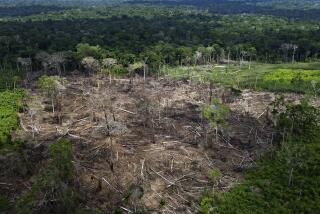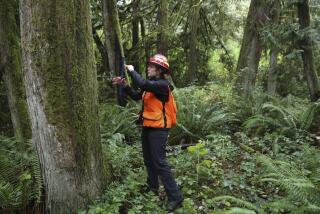To save the dogwood, try burning the forest
- Share via
Researchers say they’ve discovered the best way to save flowering dogwood trees in Eastern U.S. forests from an invasive fungus: Burn the forests.
The white-flowered tree, Cornus florida, was once prototypical of those forests and has inspired festivals across the East. But in recent years, its numbers have dwindled because of attack by the fungus Discula destructiva, which causes cankers to grow on the tree and its leaves to fall off. Reestablishing the dogwood could prove vital for ecosystems that rely on its ability to draw calcium from deep in the soil and fertilize the ground with its fallen leaves.
The tree’s berries are also important, as a source of food for more than 50 species of birds and several small mammals.
“We were worried that if dogwood disappeared … there may be a domino effect,” said study coauthor Shibu Jose, an applied ecologist with the University of Missouri. “A lot more species may be dependent on this one particular species.”
During a previous study, one of the authors had noticed that in three patches of forest that had been ravaged by fire, the trees had fared better.
To follow up on this suspicion, they went into Great Smoky Mountains National Park, which spans Tennessee and North Carolina, and compared patches of forest that had been burned with patches that had been fire-free over the last few decades.
Patches that had been burned twice, Jose said, had four times the number of dogwood stems as those that had been burned only once, and 20 times as many as those that had not been burned at all.
That difference is probably because fungus thrives in damp, shaded habitats, Jose said. When fires burn through an area, they open the forest up to light and air, allowing the dogwood to thrive with less threat of infection.
The findings were published in a recent issue of the journal Forest Ecology and Management.
Ruth Yanai, an ecosystem ecologist at SUNY College of Environmental Science and Forestry in Syracuse, N.Y., said the finding provided hope that tweaking forest-management strategies could help save the tree and the other species that depend on it.






